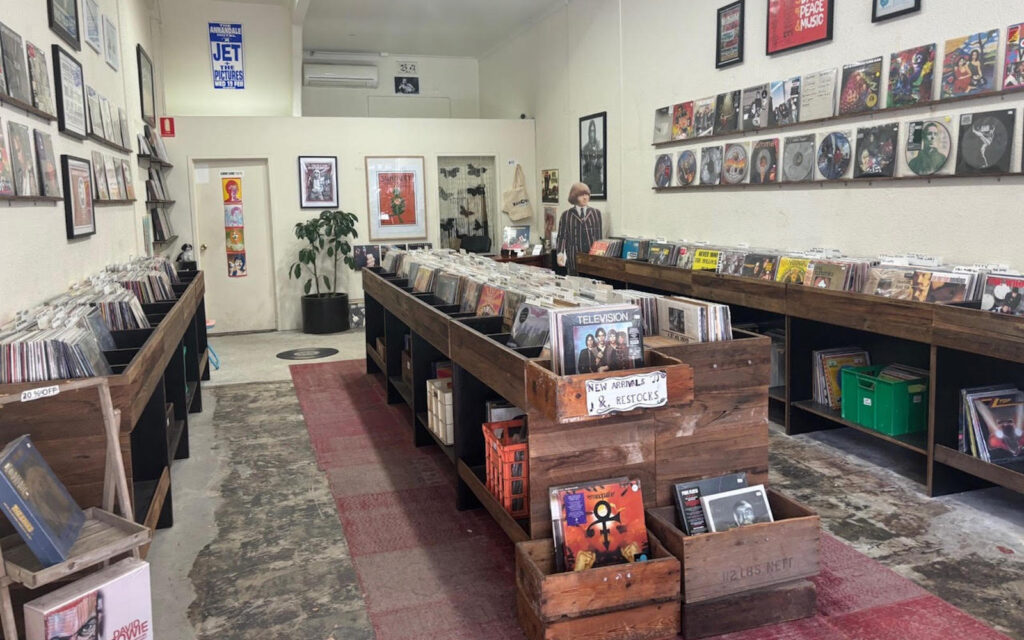Although he’s not that far into his 30s, Michael Paynter has a vast and respectable resume as a professional musician.
As well as his solo discography, he’s also been a touring musician for the likes of Icehouse, Seal, and The Veronicas, toured in support of Miley Cyrus and The Script, and now works with Michael Delorenzis as part of MSquared Productions.
At the Melbourne Guitar Show he’ll be running the Line 6 Showcase, a session that will see Paynter taking attendees deep into the capabilities of the flagship Line 6 Helix guitar processor and what it can do in the studio and onstage.
Paynter, who was an early adopter of modelers ten years ago, grapples with a statement made under a video explaining that the Helix Floor modeler is “the death of the backline.”
“I got a Helix pretty early on in the piece – almost two years ago. As a producer, I’ve been using guitar modelling software for about ten years and this is my preferred way of operating in a studio environment – to have control of a plug-in or a processor over an amp.
“This is coming from a guy that did over a decade touring around the world with $20,000 worth of amplifiers in a truck, so I’ve definitely been on both sides of the equation and it’s changed my life – and I don’t say that lightly at all.”
While Paynter isn’t saying the Helix is the death of the backline per se, he is contending that the device has allowed him to focus more on the quality of the artist he’s producing, instead of the time-consuming minutiae of integrating multiple pedals with large and heavy amps. It has given Paynter the ability to take his music further.
“It has always been very easy to pull a great sound in the studio with plug-ins because you have EQ [equalizer] and compression. It’s buried in a mix, so unless you’re making a solo-guitar record you could never tell anyway. What the Helix has done is taken the quality of a fully produced record feel and put it in a compact processor that can sit in front of you like a pedal board meaning that you can take it anywhere,” Paynter says.
Pushed on the true expansiveness of the Helix’s capability, Paynter gives an example specific to his work playing guitar for Icehouse. “In 2017, Icehouse’s lead guitarist, Paul Gildea, broke his wrist. This was about a month after I got the Helix. We had the fourteenth-anniversary tour coming up that included 50 shows.
“I had a week’s notice to fill his shoes, but literally within two days with the Helix I built what I needed for the entire Icehouse set. Keep in mind this set spanned their entire career, so I had to build in Fender Deluxes, AC30s, Plexies, a little Gibson supros, all those amps,” he says.
Even though it’s over 12 months since he achieved this feat, Paynter’s voice still seems filled with a sense of awe over what the device achieved.
A common reproach levelled at modulators and processors is that they lack the warmth of the analogue devices they are emulating. A sense of exacerbation creeps into Paynter’s voice as he tackles this criticism. “It’s warmer,” he says. “It’s the same two things with any gear – it is the fingers that are on the guitar and the ears that are setting the tone.
“If you have the ears for it, and great fingers, you can make anything sound good. You could buy a 1972 Plexi and put an L series Strat through it but if you can’t it’s going to sound like shit.”
Paynter encourages guitarists of all abilities to attend the workshop and ask as many questions as possible. “The more interactive the better because then I shape the workshop to what is relevant to those attendees. The Helix will improve the output of any guitarist, from a beginner to an expert,” he says.







